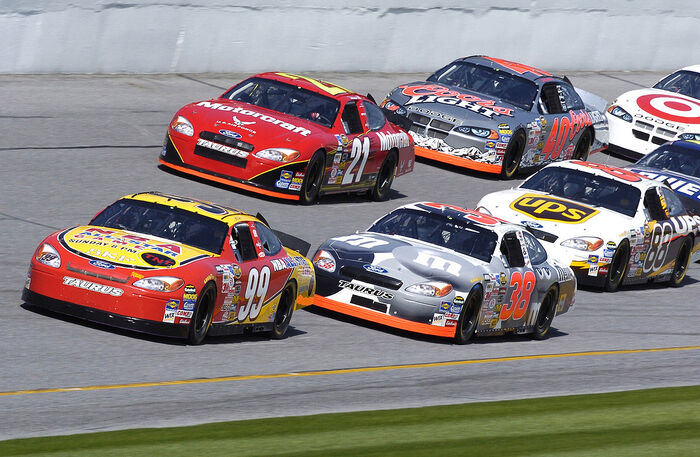NASCAR cars history
Generation 1 (1948-1966)
Cars racing since 1948 are considered the first generation. The autos were very similar to those that drove on ordinary American roads. Many automakers from Chrysler to Jaguar were involved at the time.
At that time, the modification was very strict, you could only make changes to a couple of things. The most important rule was to have a stock body and frame. When buying an auto from a dealer, it was impossible to make changes to these parts.
This is the only generation of NASCAR cars to have real doors. But since it was a severe threat to the driver, the organizers began to demand that the doors be bolted to the frame, or welded on.

Generation 2 (1967-1980)
At this time, new tracks are being created and developed for NASCAR, including superspeedways. For example, Pocono Raceway began to be built in 1969. A new generation was needed to suit these tracks.
The organizers began to adhere less to the rule of full runoff. First, they allowed some modifications to the frame, then they allowed the chassis to be adjusted. But the body should still remain unchanged.
Therefore, the second type cars looked the same as the stock ones.
At the same time, contracts were signed with Holman-Moody, Banjo Matthews, and Hutchensen-Pagan to design and build chassis for NASCAR cars. This marked the beginning of the transition from conventional ones to racing cars.
Generation 3 (1981-1990)
By this time, it was already difficult to call cars stock, since most parts were made to order. But, nevertheless, they remained outwardly similar to what the dealers offered. Work has been done on the aerodynamics of the body.
There were no doors at all, but there was a large spoiler and a streamlined design. Body panels for construction were purchased from manufacturers.
Generation 4 (1991-2006)
This type is considered the most iconic in NASCAR history. It was then that the participants first began to use wind tunnels to work on improving aerodynamics since this indicator became more important than the mechanical component of it.
The car body has also undergone changes: steel was replaced with fiberglass. This allowed for reducing the weight of the machine. Nevertheless, outwardly the autos were similar to those sold by dealers to ordinary drivers.
Generation 5 (2007-2012)
The new edition is also known as the “Car of Tomorrow”. The vehicles of this type differed quite a lot in terms of appearance and aerodynamics. A large inti-wing appeared at the back, which could be adjusted during the race, and a splitter.
Cars of this edition were renowned for their safety. So, for example, at the Texas Motor Speedway in 2008, pilot Michael McDowell hit a wall at a speed of about 320 km / h, and the auto turned over and rolled forward in a barrel.
When the remains of the car stopped, Michael got out of them unharmed.
